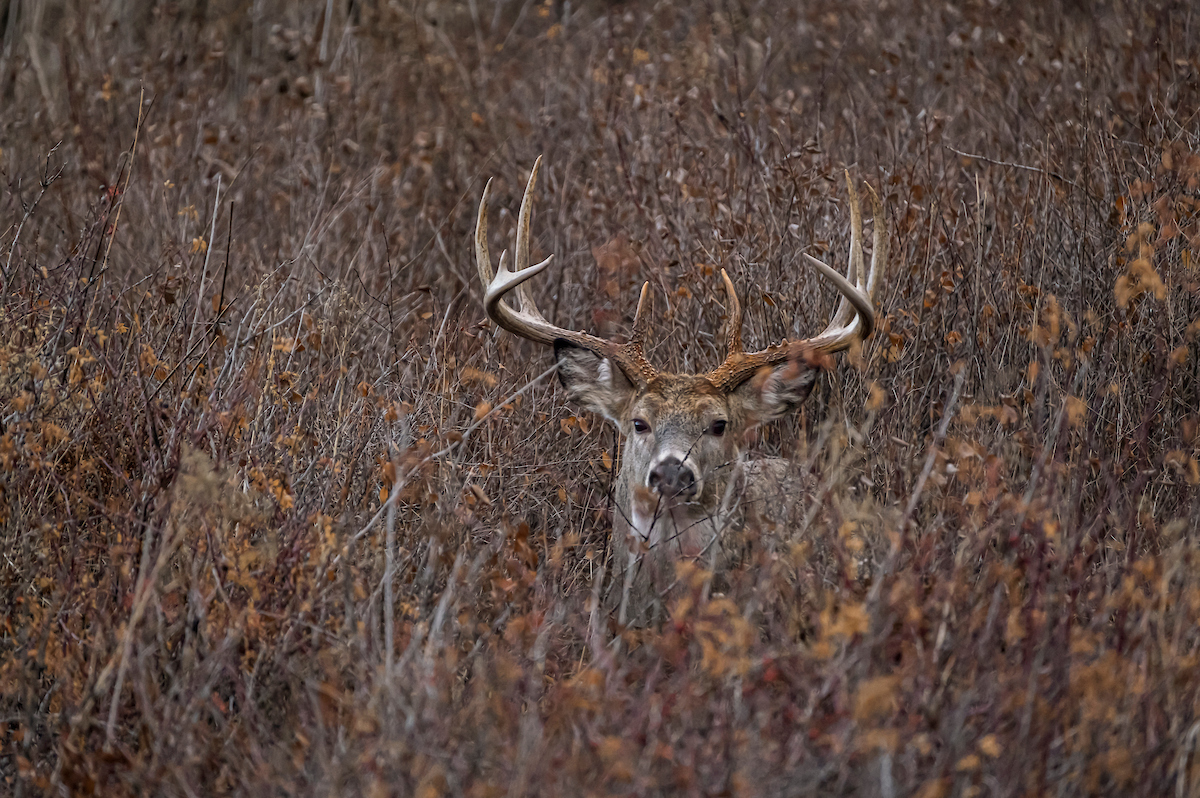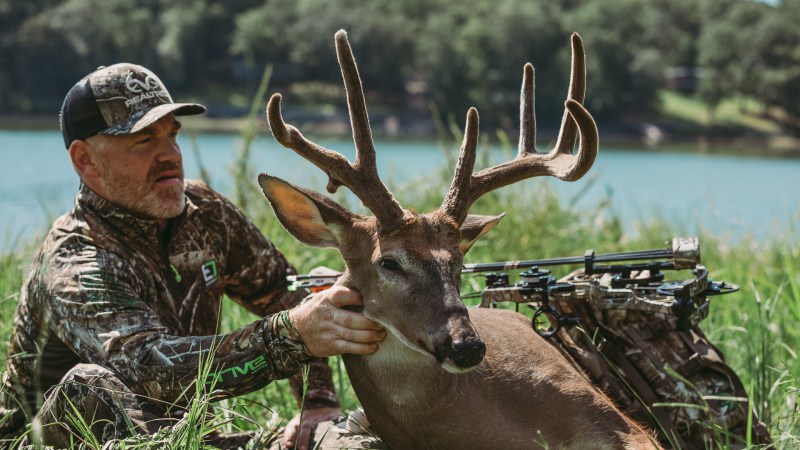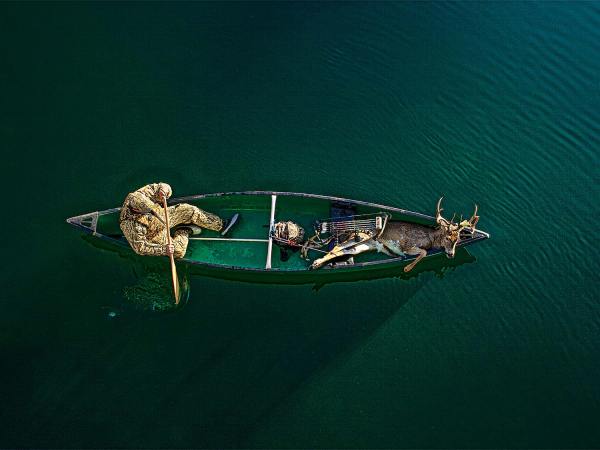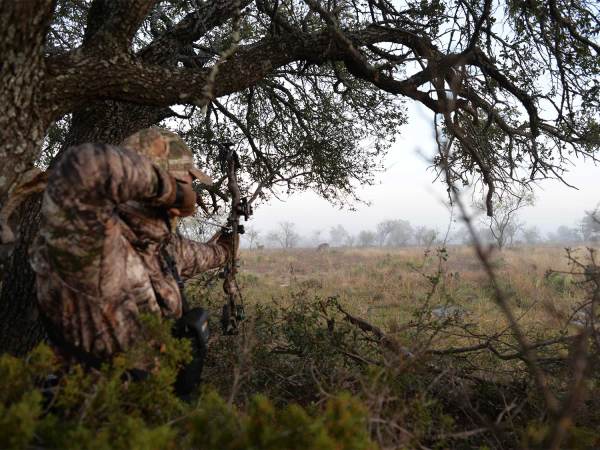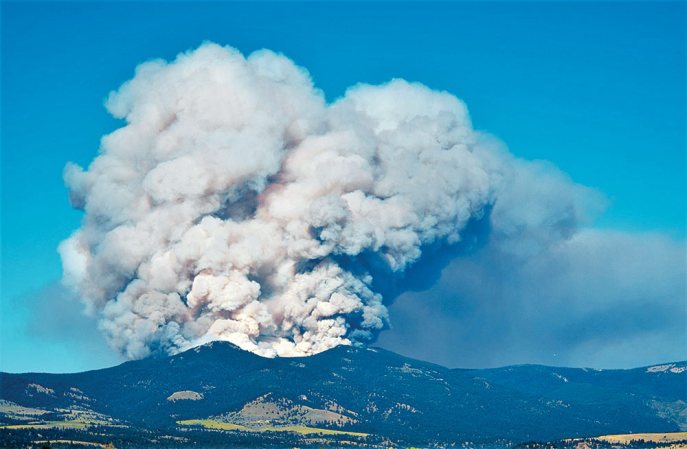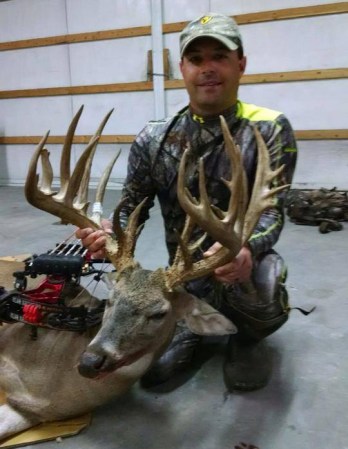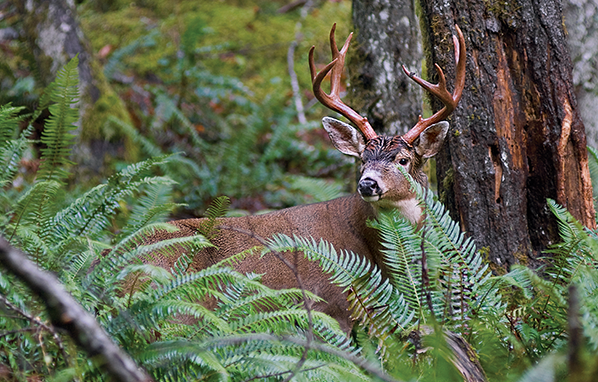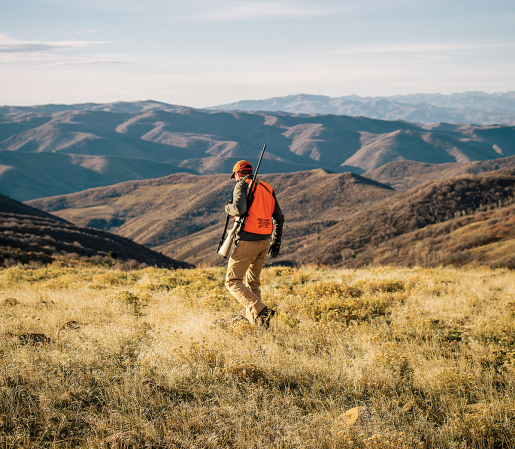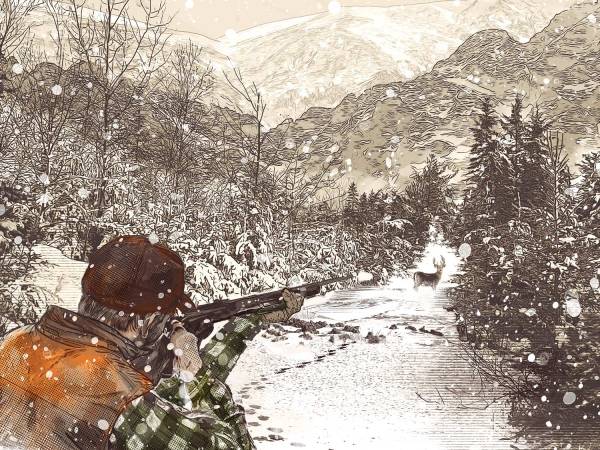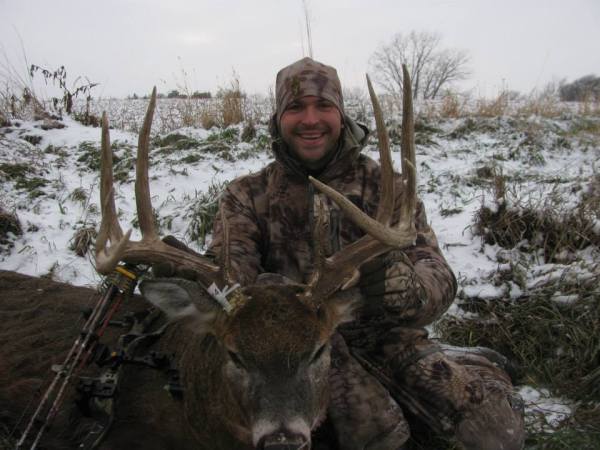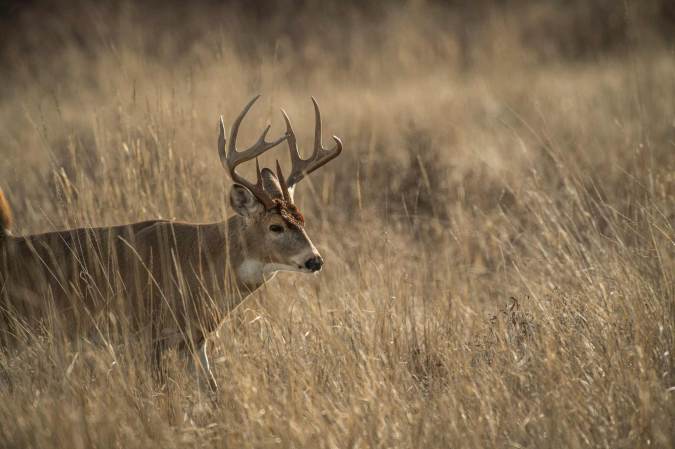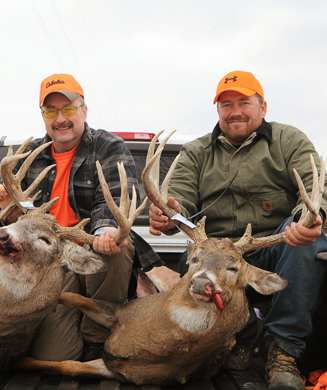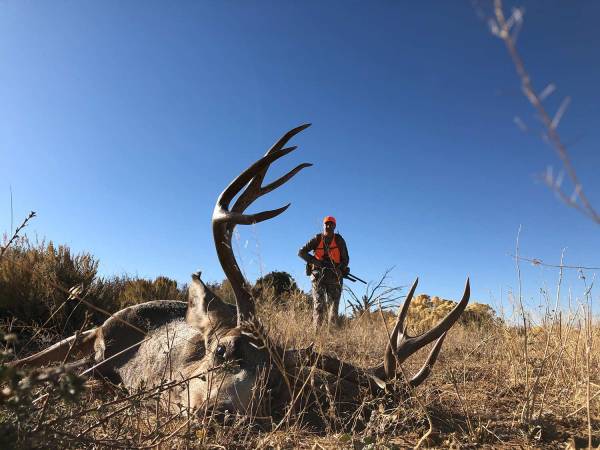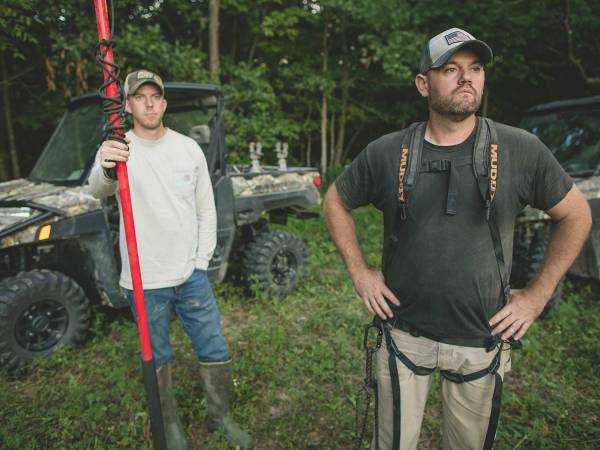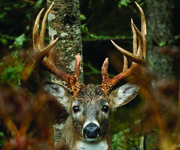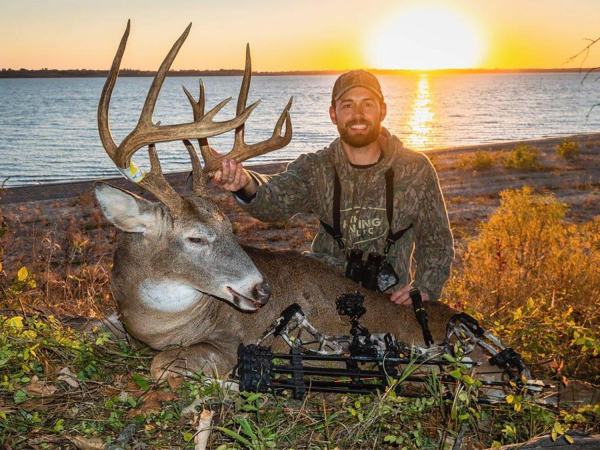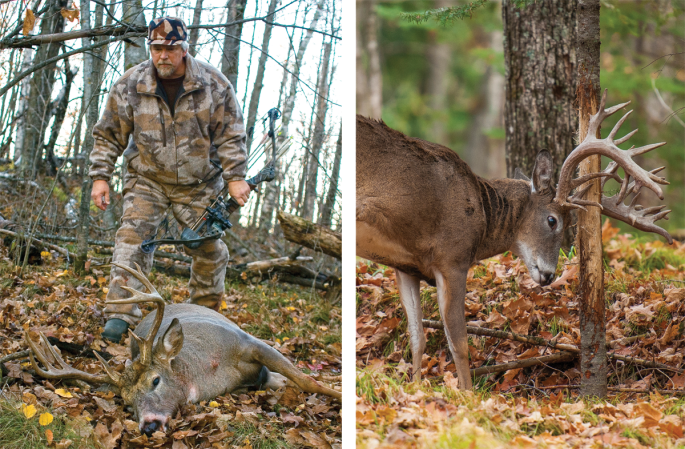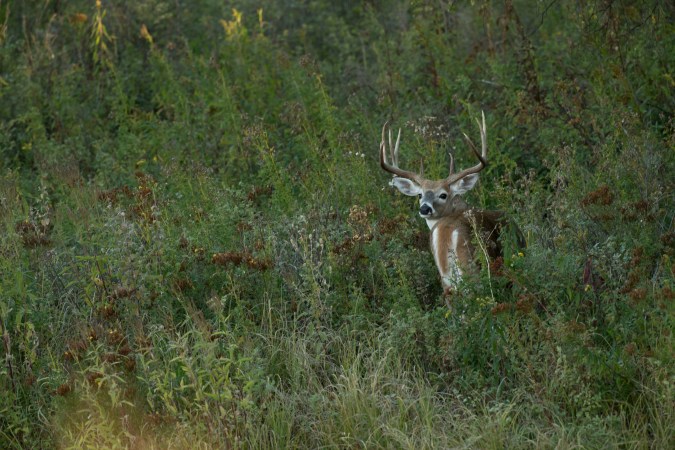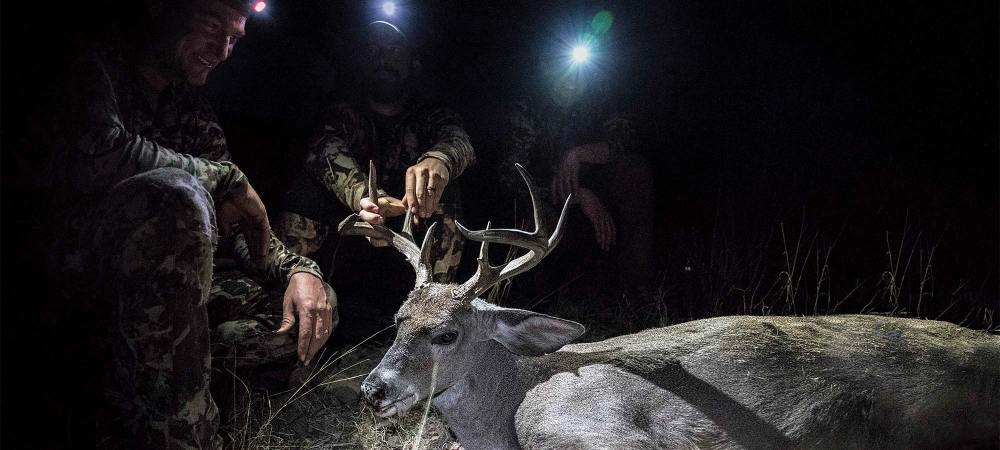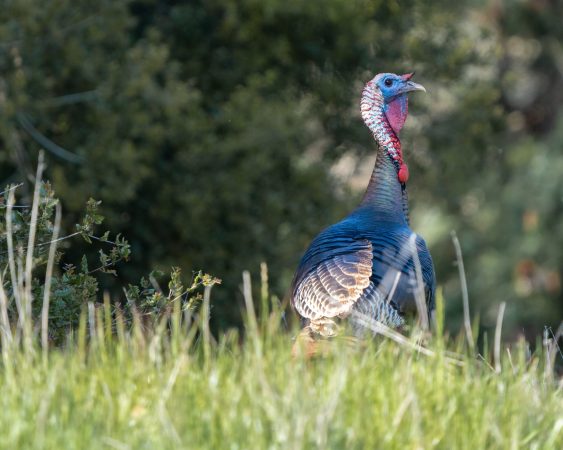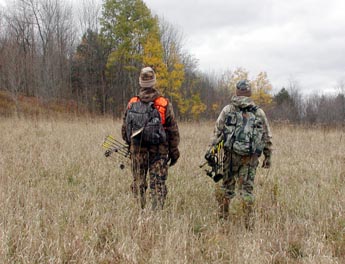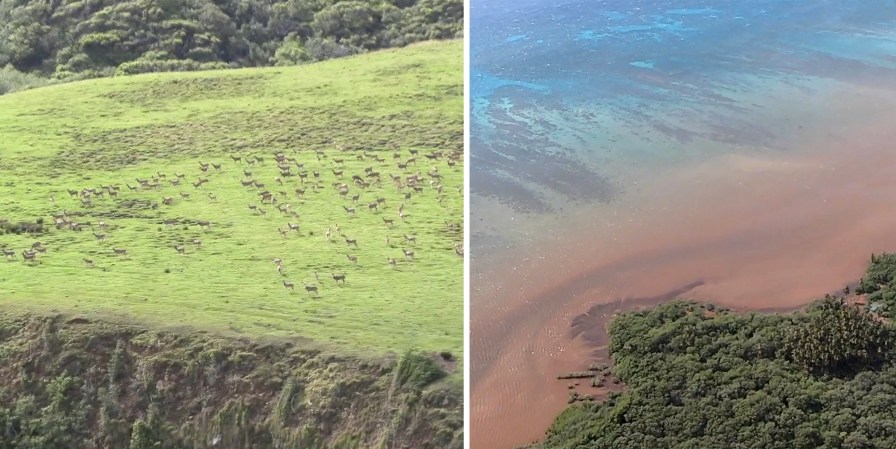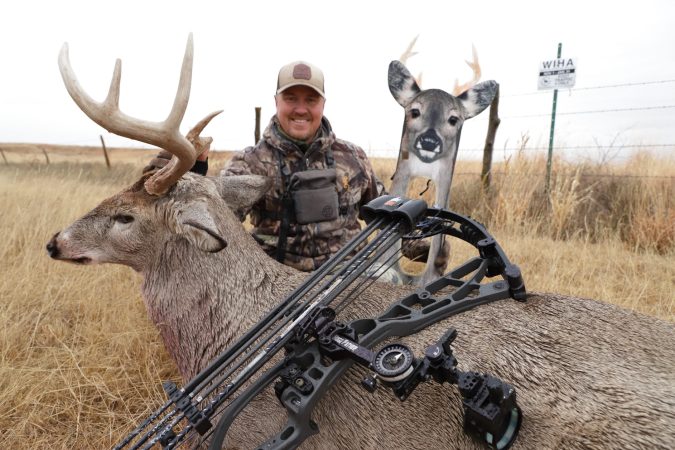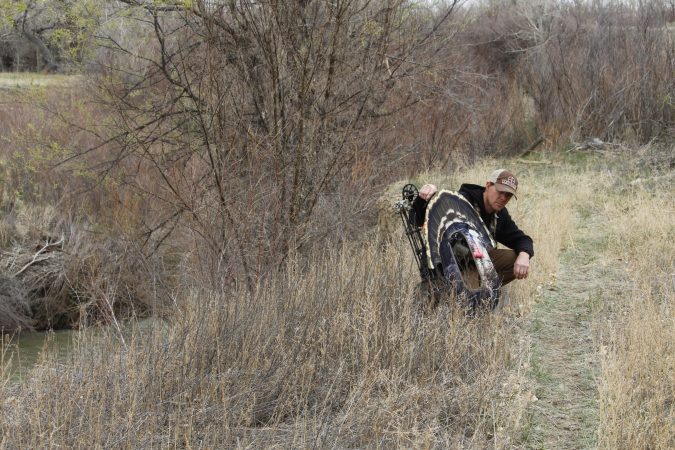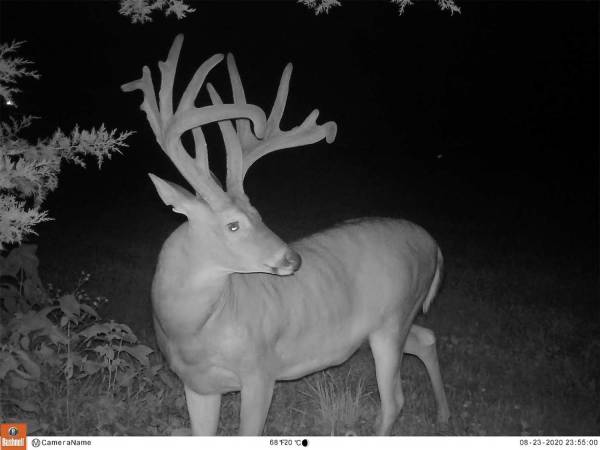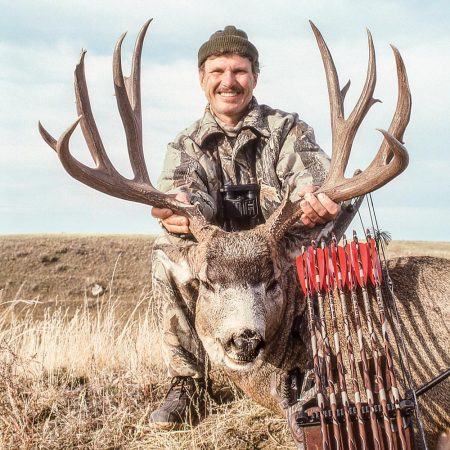You’ve probably seen videos of massive-racked, mature bucks swagger along golf course fairways and strut through subdivisions like they own the place. They do this because nobody can touch them. There’s available food, water, does and cover—and there’s not hunting pressure.
There are many places where wild whitetails grow old simply because no (or few) hunters can get to them. They live out their days in solitude miles from the nearest civilization, or maybe right next door to a nail salon. But the common denominator remains — they are unhunted. But what if you could hunt these deer? And if so, where would you go to do so?
Here are 50 of the places where savvy old bucks survive. Some of these places you can gain access to. Others you can’t. But first, let’s analyze the pre-requisites these areas must satisfy.
What an Old Buck Needs
Every whitetail has three basic needs: food, water, and cover. Quality food and water are relatively easy to find throughout much of the whitetail’s range.
What’s rarer is seclusion. Most deer are pressured animals. They see, hear, and feel the effects of hunting. Most bucks that reach older age classes don’t do so by accident. Rather, they find a way to avoid hunting pressure. Here’s where they commonly go.
Places You Can’t Hunt
The following are off limits to hunting. I don’t care if you’re the big boss or are the greatest door knocker of all time, you aren’t legally accessing any of these spots for hunting.
1. Interstate and Parkway Medians. Not many deer live in medians. But some old bucks do live within wider ones that offer an abundance of cover and the ability to exit them without crossing traffic.
2. Interstate and Parkway On-Ramps. As with the former, the area between on-ramps and the interstate or parkway itself can hold deer, especially if it has thick cover, food sources, and water nearby.
3. Interstate and Parkway Property Lines. A lot of big whitetails live along the boundaries between interstates, parkways, and their neighboring lands. This is especially true for blocks of cover that butt up to these public rights-of-way. Of course, if the deer is bedding on the private land (which they generally do), you can technically hunt these deer with permission.
4. National Parks. Large national parks provide an oasis for whitetails. The habitat isn’t always great, but deer still grow old on these vast pieces of public land that hunters can’t touch.
5. School Yards. With a firm understanding that these areas are off limits to hunters, whitetails commonly frequent pockets of cover on and around school yards.
6. College Campuses. Some colleges sprawl out over vast areas. Those that have intermittent timber and other forms of cover (especially around farmland) commonly hold whitetails, and big ones at that.
7. Wildlife Preserves. Areas specifically dedicated to holding and fostering wildlife are ripe with giant bucks. These areas are some of the best wildlife strongholds in the nation. Most of these are not open to hunting.
READ NEXT: 10 Myths About Hunting Mature Bucks
Places That Might Allow Hunting
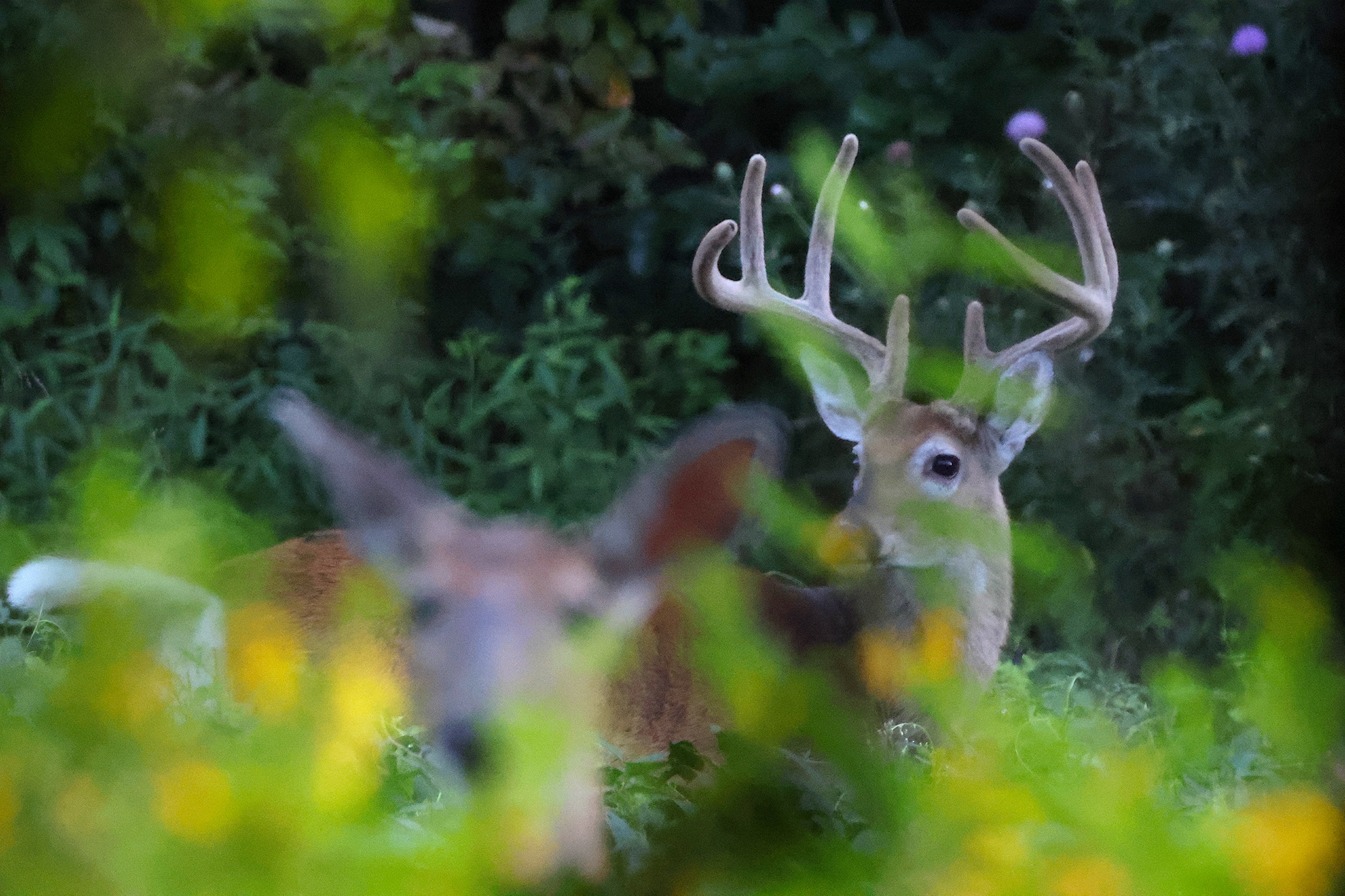
Some of the following spots might be open to hunting opportunities. If so, go scout them. If not, see about asking permission from those in charge. You’ll likely get a “no,” but you also might receive a “yes.”
8. City Lakes. Cities and townships require a water source, and those that get theirs from lakes sometimes have sizable acreages under management. Some of these allow hunting, while others do not.
9. City Parks. Most city-owned parks don’t allow hunting. However, some do offer quota hunts. These tend to hold some great bucks.
10. State Parks. Not all state parks permit hunting, but some do. Find those that hold good deer population numbers and age structures.
11. Timber Companies. A lot of timber companies own vast acreages. At times, these are open to public access. Other times, these are leased. Still, with the right connections, you might gain permission.
12. Power Companies. As with timber companies, power companies also own large swaths of ground. This is especially true for coal and electric companies that have reclaimed coal mine ground. These areas tend to offer incredible habitat and an abundance of deer.
13. Land-Locked Areas. Any quality habitat that’s landlocked has the potential to present solid deer hunting opportunities. Sometimes it’s private, and you can gain access. Other times it’s public, and you need private-land trespass permission to reach it.
14. Unmarked Public. Interestingly, not all public land is marked by hunting apps and wildlife agency websites. Some small pockets of public land remain overlooked due to minimal to no coverage of it. Newly designated public lands often take time to appear on maps and apps.
15. Water-Locked Areas. Any ground that’s surrounded by water, or enough of it to deter or decrease access, has the potential to hold big whitetails.
Places You Might Get Permission to Hunt
Most of the following areas are controlled by individuals or entities. It won’t be easy to gain permission from those that own or run them, but that shouldn’t stop you from trying. Still, it usually takes a significant “in” with someone to score such a spot.
16: City Limit Landowners. Those who own land inside the city limits might be holding some big bucks. It might only be two or three acres, but if it has cover, food, and water are nearby, there might just be a giant living there.
17. Corporate Properties. Large companies tend to own a significant amount of land. Many times, these lands have stands of timber, water retention areas, and unused ground. Deer live here.
18. Detention Centers. It’s rumored that the Pennsylvania state record was bagged close to a prison. Oftentimes, these areas hold deer that largely go unhunted.
19. Factory Lands. Like corporate properties, factories routinely hold buffers of land around their perimeters. These regularly grow up and turn into fine deer habitat.
20. Golf Courses. Despite being so close to human activity, mature whitetails understand they aren’t being hunted here. Rather, it’s a sanctuary well away from the humans who are trying to turn them into venison. Often, a few select hunters will get access.
21. Under Large Bridges. It’s quite common for big whitetails to live under or close to large bridges, such as those along interstates, parkways, and other major roadways. If it has habitat, deer will be there, and at least travel underneath them. Sometimes, these are privately owned. Other times, they aren’t.
22. Large Cemeteries. Deer live in large cemeteries, especially those with pockets of cover. Deer don’t mind the people who come and go, and these grounds are often quiet.
23. Railways and Railyards. Older bucks might not like the noise that a railyard emits, but they do like the lack of hunting. Many of these aren’t tended well and thicken up with early successional habitat.
24. Rock Quarries. Exploding rocks might sound like gunfire, but old deer know better. Rarely are rock quarries hunted, and gaining access to these can make for a great hunt.
25. Suburban Properties. Many of today’s biggest whitetails are bagged in the suburbs. Because most landowners don’t allow hunting, and deer go overlooked, they reach older age classes.
26. Trap and Skeet Clubs. You might think the constant shooting runs deer off, but it doesn’t. Deer understand the difference between noise and hunting pressure. Rarely does hunting take place at trap and skeet clubs, and bucks understand this.
27. Water Company Land. Water companies require a good bit of land to operate. This routinely leads to pockets of bedding cover where deer hide.
28. Orchards and Vineyards. These are often large to mid-sized properties that are, of course, privately owned. You’ll have to get permission, but if you do, you’re in for an excellent hunt.
Terrain Features That Monster Bucks Love
OK, by now you’re probably bummed out because you don’t have access to any of the spots listed above. You’re freaking out because you know you’ll never shoot a monster buck now. But don’t lose hope just yet. The spots listed above make up a very small percentage of America’s deer habitat. Furthermore, they likely make up an even smaller percentage of big buck harvests. Lucky for you, there are many other places to find big deer. Here’s the type of terrain features that big bucks like to frequent.
29. Brushy Benches. These are especially good when located halfway to ¾ of the way up the hill.
30. Brush Piles. While most deer and deer hunters ignore these, mature bucks recognize that and move in.
31. Blow Downs Areas. Pileups of downed trees and other forest debris create strongholds that deer can hide within.
32. Cutover Timber. Logged areas lead to a lot of treetops and limbs that culminate into a phenomenal buffet of food and plethora of bedding cover.
33. Dilapidated Structures. Believe it or not, deer sometimes bed down within or against old structures that have been abandoned by humans.
34. Ditches and Drainages. Out-of-the-way places that deer hunters rarely pay attention to, ditches and drainages sometimes hold overlooked deer.
35. Hubs. Best described as where several ridges taper down into one location, hubs allow deer to smell danger from multiple directions.
36. Islands. These spots don’t get hunted as much as hunters often believe. Big bucks flock to islands that provide bedding, food, and internal water sources.
37. Oxbows. Due to the security created by the water, bucks commonly bed down in oxbows. With water to their rear, and a good wind, it’s a great system.
38. Open Prairies. With no trees in sight and a great difficulty for hunters to close within range of them, big whitetails live out their days on the prairie. Here’s how to hunt whitetails in open country.
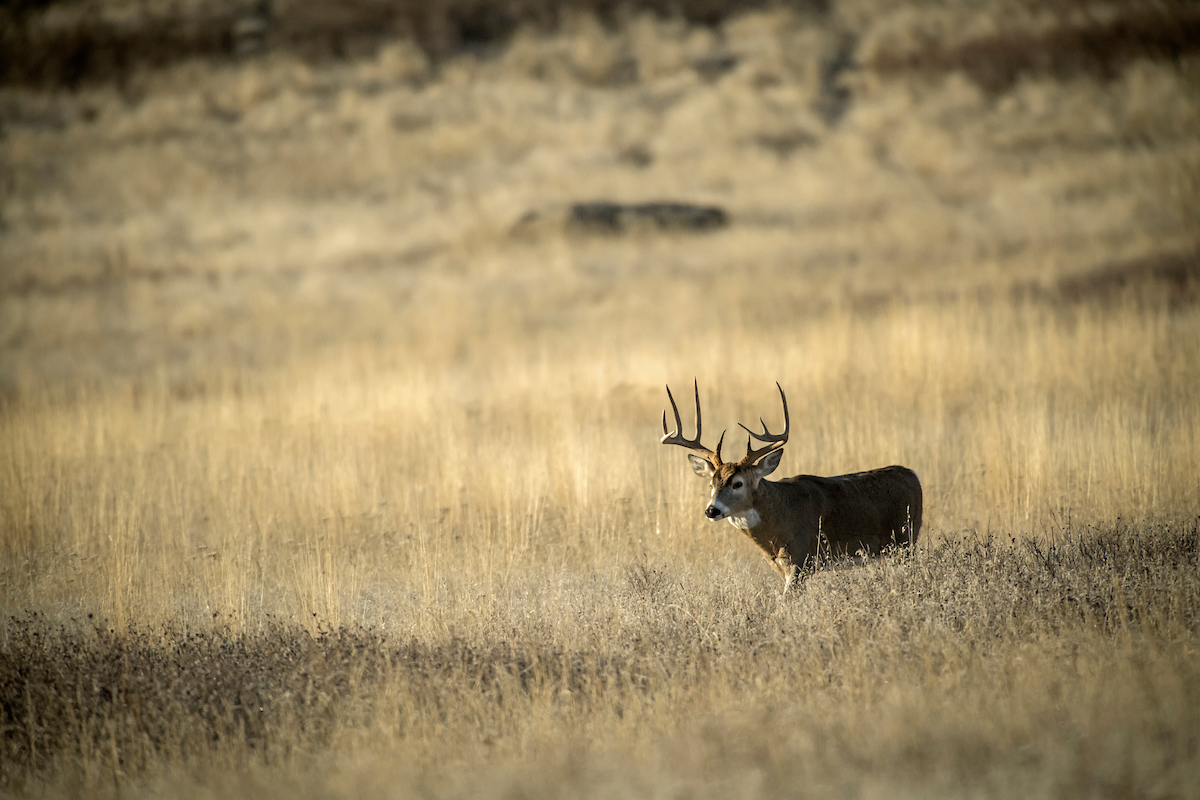
39. Plateaus. I’ve watched numerous mature whitetails come up out of the flats, walk up hills, and bed down on the plateaus up top. Deer like bedding on, or just below, the high ground.
40. Leeward Ridges. Best described as the downwind side of a ridge line, leeward ridges allow bucks to smell from two directions — the prevailing winds coming over the top and the thermals drifting upward from below.
41. Ridge Lines. Deer love ridges. They bed, feed, and travel along these lines of movement.
42. Ridge Endings. The end of a ridge line, ridge endings support bedding areas, feeding destinations, and staging areas for food sources down below.
43. Low Flats. Flat ground within heavy cover is an excellent location to find and harvest a mature deer. These spots offer visual, audible, and winding advantages.
44. Marsh Islands. Bucks seek out the high ground within the interiors of marshes. These elevated bedding areas provide the benefits of water around them, which most hunters and predators won’t cross or navigate.
45. Swamp Interiors. Like with marshes, swamps sometimes offer reprieve from hunting pressure. Locating swamps that go unhunted can lead to a phenomenal hunt.
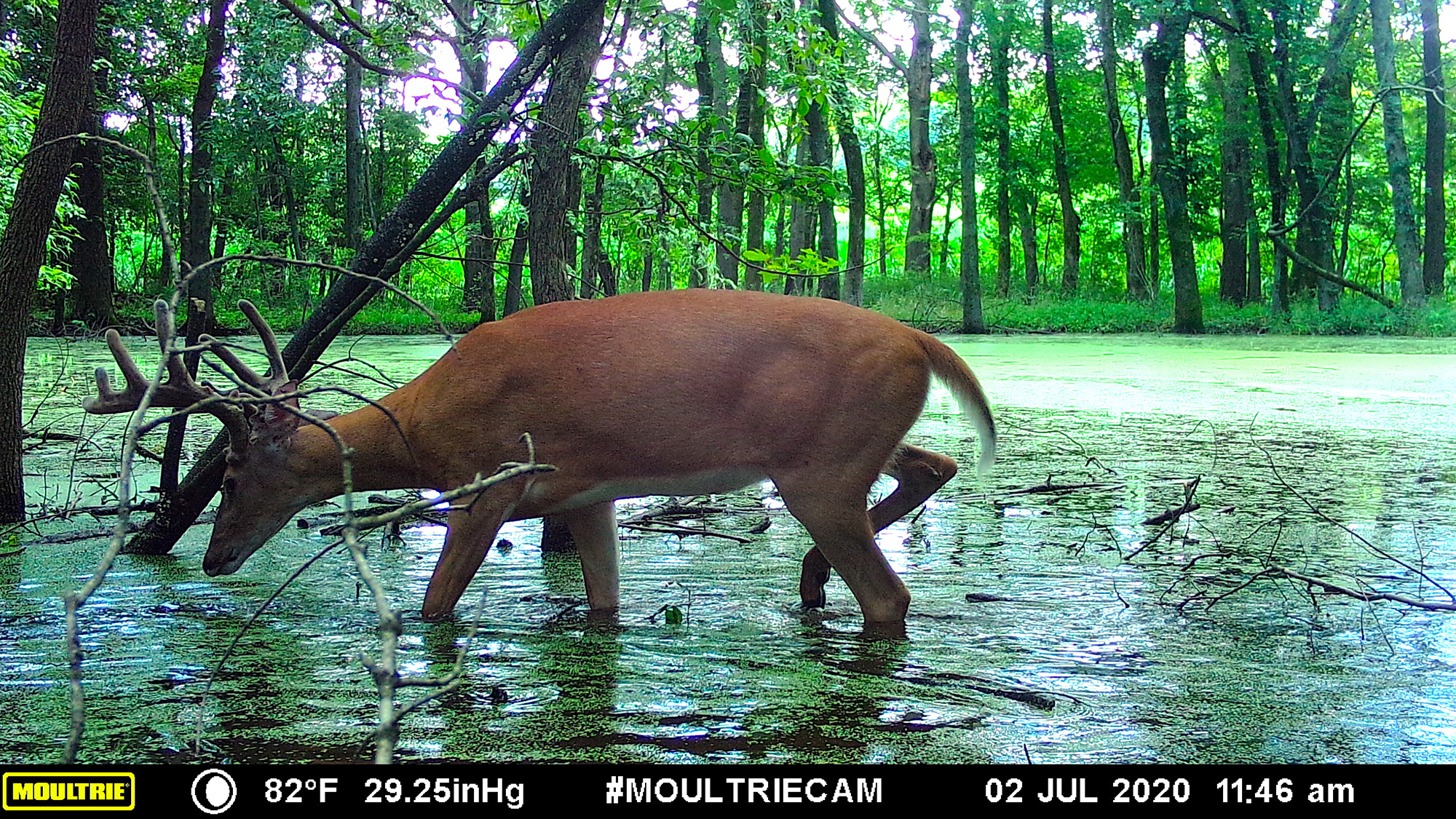
46. Small Woodlots. Big whitetails find the spots where hunters don’t go, and these are oftentimes small woodlots where most hunters walk right passed.
47. Solar Bedding. Most accurately defined as bedding areas that receive direct sunlight, solar bedding is generally found along southern-facing slopes.
48. Thermal Bedding. Most described as dense stands of conifers, such as cedars and spruce, thermal bedding holds in additional heat.
49. Massive Private Lands and Co-Ops. Landowners who have large tracts of managed property or those who join co-ops with their neighbors tend to find more success in the big buck department.
50: Anything Overlooked. The above places aside, never forget to check any other overlooked pockets of early successional habitat. Old bucks sometimes live in weird places. Deer are edge animals, and that’s the type of cover they love. Find such spots, and it just might be home to a monster buck.
The Real Takeaway
Perhaps 99 percent of deer hunters won’t ever get an opportunity to hunt spots No. 1-28. This isn’t necessarily a bad thing. These spots create sanctuaries where deer get old. And you can still take advantage of these properties without ever stepping foot on them. The true takeaway from this list isn’t to gain access to those spots. That’s a long shot in the dark. No, the real takeaway is purchasing, leasing, or gaining permission to the private properties that borders them. Do that, and you might just get a chance at the buck of a lifetime.
